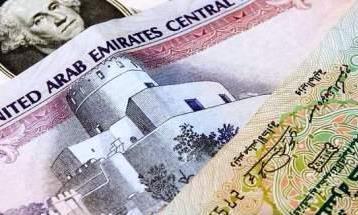
The hike in Fed rates will have repercussions across most GCC states as the consequent escalation in bank finance rates will likely stoke up
As the UAE's currency is pegged to the dollar, they will need to mimic the policy path followed by the US Fed in terms of interest rate movements. The UAE hiked its key interest rates on all three occasions when the Federal Reserve announced an increase
Majority of the Federal Open Markets Committee participants have projected three or more interest rate hikes in 2018 which would see the interest rates move to a range of two per cent to 2.25
UAE banks, after the rate hike and with improved credit conditions, witnessed a marginal expansion in interest margins, resulting in improved earnings in 2017. The relatively stable performance can be attributed to growth in the non-oil economy, improved liquidity and stable funding conditions.
The UAE banking sector is expected to benefit from interest rate increase as a higher interest rate environment results in expanding net interest margins for banks as a result of a large share of non-interest bearing deposits, creating significant upside potential.
UAE banks have maintained a healthy loans-to-deposit ratio of above 95
The year-on-year credit growth in during the period fell to 0.9
However, this is not good news for customers as the increase in burden for banks would be passed on to them in the form of higher loan rates. Though the central bank's rate hike is on short-term interest rates, it is expected to trickle down to medium- and long-term rates, affecting personal, auto and home loans. The rate at which banks charge for consumer loans including that of credit card is usually pegged to repo rate.
An increase in repo rates would be passed on to customers in the form of a higher annual percentage rate for
While banks are quick to increase the rates they charge for lending money (loans), they often take the opposite approach for paying interest in savings accounts. From the perspective of banks, a higher interest rate would help them increase their net interest margin. However, it could also deter credit offtake thereby reducing their profitability.
In the case of manufacturing companies and other non-banking institutions and services, cost of borrowing funds would rise with an increase in interest rate and
The UAE from an economic viewpoint is in the need to reduce its interest rates in order to encourage borrowings and subsequently aid in fostering economic growth and diversification. However, they are expected to rely on fiscal consolidation measures to protect their balance of payments as they run the risk of having fluctuations in oil revenue if they take the de-pegging route to have greater control over their interest rates.
The increase in borrowing rates would help the UAE banks increase their net interest margins.
The UAE will need to improve its credit conditions in order to promote corporates to increase borrowings and improve their productivity. UAE banks will also need to adopt consolidation measures and take proactive steps to make borrowing more attractive for corporates in order to achieve better cost efficiency and profitability amidst rising interest rates.
